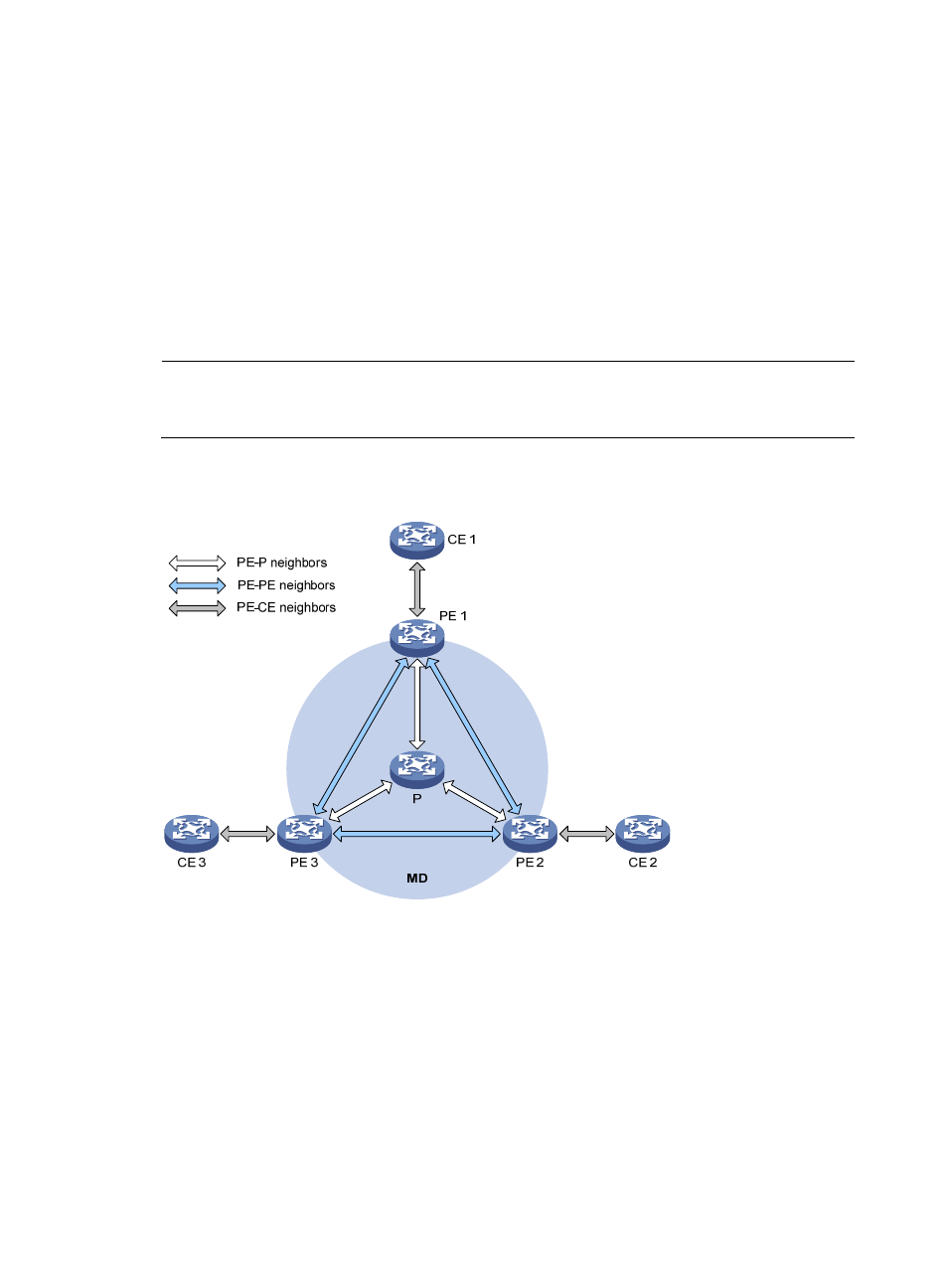Pim neighboring relationship in md-vpn – H3C Technologies H3C S12500 Series Switches User Manual
Page 258

242
7.
A share-group is assigned a unique switch-group-pool for MDT switchover. The PE chooses an idle
address (switch-group) from the switch-group-pool, and encapsulates the multicast packets for that
VPN using that address.
8.
When the traffic meets certain conditions (for more information, see "
device initiates an MDT switchover message to the downstream along the share-MDT, so that a
switch-MDT is built using the switch-group between that PE device and the remote PE devices with
receivers downstream. Then, after a switch-delay period has passed, an MDT switchover process
starts. All VPN multicast packets that have entered the public network at that PE device are
encapsulated into public network multicast packets using the switch-group, instead of using the
share-group, so that they are switched from the share-MDT to the switch-MDT.
For more information about MDT switchover, see "
NOTE:
A VPN uniquely corresponds to an MD and an MD serves only one VPN, which is called a one-to-one
relationship. Such a relationship exists between VPN, MD, MTI, share-group, and switch-group-pool.
PIM neighboring relationship in MD-VPN
Figure 67 PIM neighboring relationship in MD-VPN
PIM neighboring relationships are established between two or more directly interconnected devices on
the same subnet. As shown in
, the following types of PIM neighboring relationship exist in
MD-VPN, as follows:
•
PE-P neighboring relationship—PIM neighboring relationship established between the public
network interface on a PE device and an interface on the P device across the link.
•
PE-PE neighboring relationship—PIM neighboring relationship established after a VPN instance on
a PE device receives a PIM hello from a VPN instance on a remote PE device through an MTI.
•
PE-CE neighboring relationship—PIM neighboring relationship established between a
VPN-instance-associated interface on a PE device and an interface on a peer CE device.